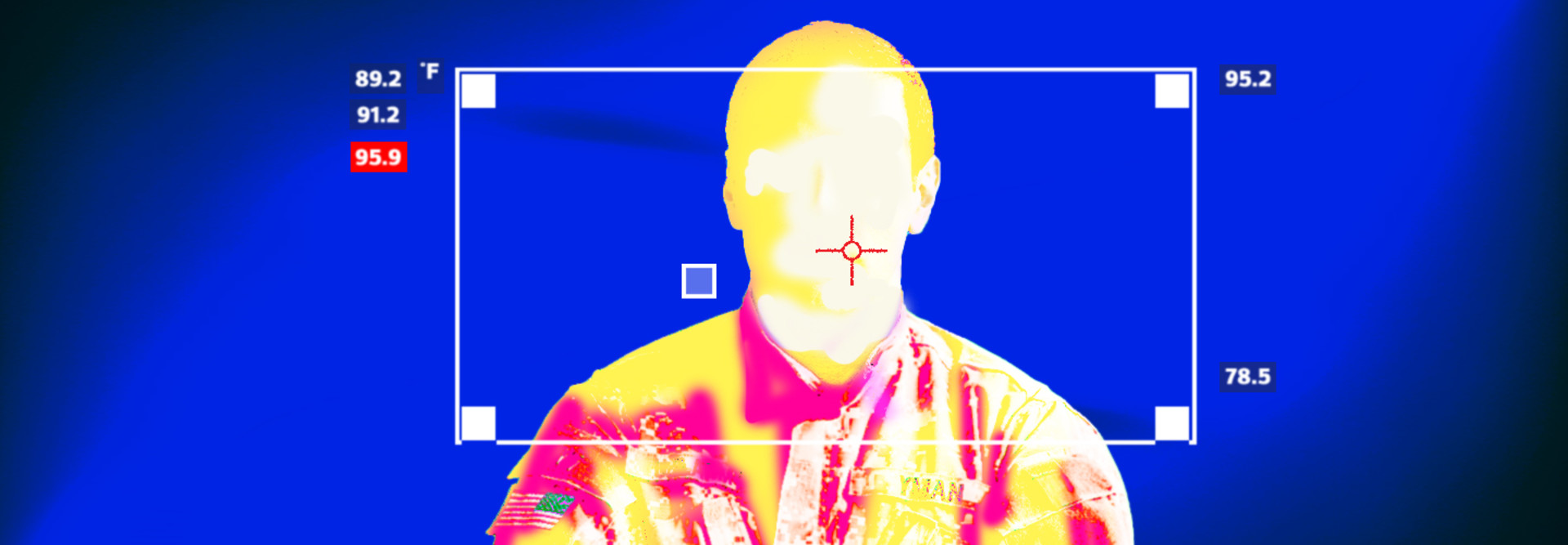A piece of military warfighting equipment generally used in the field is being put to work in a different context: to keep U.S. Army bases safe from COVID-19.
The Army is adapting its infrared sensor technology, routinely used to locate targets on the battlefield, to help stop the spread of the novel coronavirus. Modified Microsoft HoloLens technology is helping detect elevated temperatures at Fort Benning, Ga., which has a population of about 120,000.
The technology, known as the Integrated Visual Augmentation System (IVAS), can detect forehead and inner-eye temperature, according to Bridgett Siter, communications director for the Army Future Command’s Soldier Lethality Cross-Functional Team.
“A week ago, we were talking about the potential impacts of the pandemic on the IVAS program,” said Brig. Gen. David Hodne, director of the Fort Benning-based team. “Today, we’re talking about the potential impacts of IVAS on the pandemic.”
Agencies Get Access to Screening Equipment
As more states permit businesses to reopen, making it possible for federal employees to return to work, government entities are using rapid temperature checks and other technologies to help detect COVID-19 infections.
Other Army programs and some Air Force bases are also using temperature checks, and the General Services Administration has put together a contract vehicle for agencies that want to purchase screening equipment.
The Transportation, Homeland Security and Health and Human Services departments recently released interagency guidance on temperature checks as part of the government’s Runway to Recovery framework. The document is designed to help airlines and airports mitigate the public health risks of COVID-19.
“While temperature screening has limited reliability in detecting individuals with COVID-19, it may detect some noticeably sick passengers,” states the guidance. “Airlines and airports may need to consider the use of temperature screening to meet destination requirements or requirements of local health authorities.”
Battlefield Tech Is Adapted for the Homefront
The idea to adapt IVAS for medical screening came when Tom Bowman, director of the IVAS Science and Technology Special Project Office within the C5ISR’s Night Vision Laboratory at Fort Belvoir, Va., was watching news reports about COVID-19 this spring, and thought the project’s digital thermal sensors could be adapted to detect fever.
The technology initially was tested at Fort Benning, where thousands of soldiers have been screened using the system, Siter says. The system is being used to rapidly assess the temperature of hundreds of soldiers each day as they prepare for training.
IVAS will still be used in combat to detect targets, improve soldiers’ situational awareness and make training possible during pandemic lockdowns.
“It’s first and foremost a fighting system,” Siter says. “But it will also be used to rehearse combat operations and to train soldiers.”
Staff Sgt. Kaylee Dubois/ U.S. Air Force










